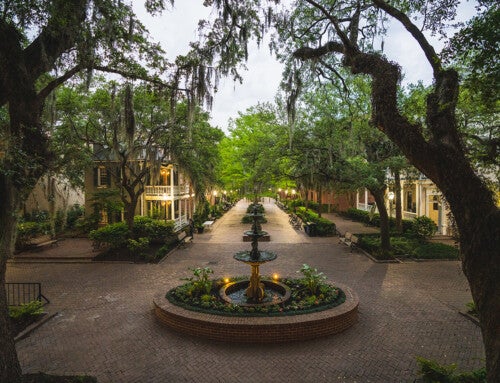Two College of Charleston students are spending their summer participating in a project that will measure seismic activity across the United States. Geology majors Jackie Alexander and Matt Hughes will scour South Carolina and North Carolina to identify sites suitable for installing 25 earthquake monitoring systems. Teams of students from universities across the U.S. have identified sites for nearly 1,500 seismometers since the project began in 2005.
“It is an amazing opportunity for these students to gain valuable field experience as an undergraduate,” says geology professor Steve Jaume, who is supervising the project. “They have been trained by professionals and will work independently. The sites they identify will help to provide a “telescopic” look at the Earth’s interior.”
Alexander and Hughes will be identifying isolated sites away from anything that can generate vibrations that aren’t natural – like railroad tracks and roads. The site must also have access to a cell phone network to transmit the data. Once a site has been identified, they will secure permission from the landowner and file the necessary permits. This winter, professionals from USArray will install the seismic stations.
“The seismometers are vey sensitive and can pick up vibrations from earthquakes worldwide of a magnitude five or six and above which occur nearly every day,” Jaume says. “My students and I will also be deploying our own portable seismometers, which will aid us in the identification of seismic activity in S.C.”
This project is coordinated by the Incorporated Research Institutes of Seismology (IRIS) and is part of EarthScope, funded by the National Science Foundation. EarthScope has been called the largest science project on the planet and will help scientists to understand the dynamics and evolution of North America and develop a better understanding of natural disasters such as earthquakes.
Already, 400 high-quality broadband seismographs are being placed in temporary sites across the conterminous United States from west to east, and Alaska, in a regular grid pattern with station spacing of about 70 km. After a residence time of two years, each instrument is picked up and moved to the next carefully selected location on the eastern edge of the array. When completed, nearly 2,000 locations will have been occupied during this program.
For more information about the College’s involvement in the EarthScope program, contact Steve Jaume at [email protected].



